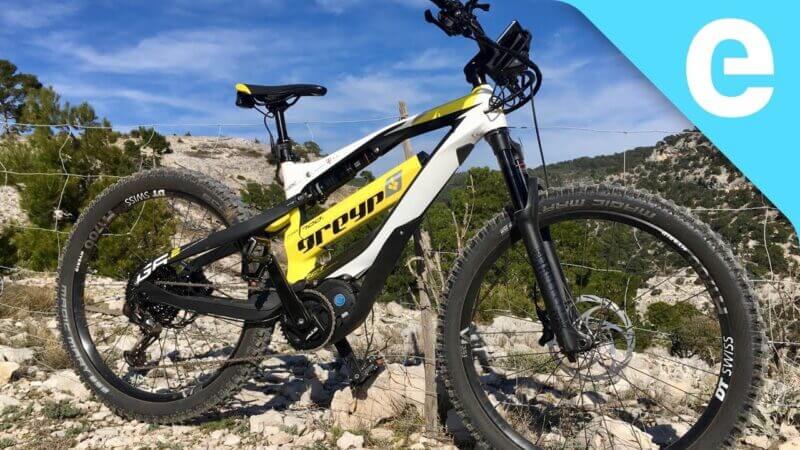
When you’re looking for an e-bike, one of the first things you need to think about is what you’ll be using it for. Just as you need to consider the primary purpose of a car before purchasing one, you’ll need to decide how many passengers or cargo you’ll be carrying. This way, you won’t end up buying something that’s not going to be suitable for your needs.
Class 1 e-bike
Electric bikes are becoming increasingly popular, especially in urban areas. They allow you to pedal, but they can be limited to low speeds because they are classified as motor vehicles in some countries. Depending on the country, you may have to obtain special licensing or display an identification plate on your bike. They may also be restricted to private property. However, a Class 1 e-bike is not a road bicycle. You can still pedal on pavement, but you won’t be able to reach a top speed above 25 miles per hour.
A class one e-bike is similar to a traditional human-powered bike, but it also has a small electric motor for assistance. These bikes are designed to provide you with assistance when pedaling, allowing you to tackle hills, overcome wind resistance, and accelerate. You can choose between Class 1 and Class 2 e-bikes, which come in different prices and brands. You’ll be able to find a bike to fit your needs.
Class 2 e-bike
The Hurley Tailside is an affordable Class 2-eBike with a punchy 350W motor and a sturdy aluminum frame. The bike comes with integrated LED lights, fenders and a kickstand for extra stability and convenience. For the price, it’s an excellent choice for commuting. The range of this bike is between 30 and 45 miles. Its electric motor is capable of providing up to 80% of the bike’s torque.
This electric bike is legal on bike paths and trails, and the throttle and pedal assistance modes allow you to pedal and enjoy a smooth ride. Pedaling-assist class e-bikes can deliver variable power levels up to 20 mph, with the motor cutting out automatically at that speed. For safety, the best models have an even weight distribution, powerful motors and large batteries. They also feature integrated lights and durable components.
Class 3 e-bike
There are three classes of e-bikes: Class 1 electric bikes, Class 2 electric bicycles, and Class 3 electric bikes. Understanding these classes is important because they affect how e-bikes can be regulated and the laws governing them. These laws change every year, so it’s essential to learn about them before buying one. Here are some examples of Class 3 electric bikes:
The speed of a Class 3 e-bike depends on your preference and needs. If you’re a speed junkie, you may prefer a throttle-operated Class 3 e-bike. This type of e-bike will replace your car without sacrificing comfort. Moreover, it can save you time and money when riding in wet conditions. Also, it’s important to note that a Class 3 e-bike can be very expensive.
Class 4 e-bike
The class 4 e-bike is an electric bike with a motor over 750 W. These models can reach speeds of 30 mph and come with throttle and PAS controls. Class 4 e-bikes are registered as scooters and are permitted on both private property and public roads. They have the same regulations as a normal scooter, including the need to register and have a valid license. They can also be used on public roads, but only if they are equipped with PAS.
Because Class 4 e-bikes share the road with cars, they must obey traffic laws. In fact, a few states allow riders to ride them on sidewalks. These states, however, may limit their top speed and require riders to sign a pledge that they will not ride on private property or in bike lanes. While most e-bikes are safe to ride on sidewalks, a few can exceed the maximum speed limit.
Class 5 e-bike
The electric drive system on a Class 5 e-bike works with the assistance of pedaling action. However, this technology is limited to low speeds. In some parts of Europe, this type of bicycle is considered a motor vehicle. As such, it is not permitted to operate on bike-specific roads or trails. In some countries, the top speed of a Class 5 e-bike is about 25 kph.
The battery life on a Class 5 e-bike is one hour. While a Class 2 e-bike can reach a top speed of 20 mph, it is still important to keep this in mind when riding in rough terrain. The throttle can cause damage to the turf. But if you’re an experienced rider, you can find a suitable Class 5 model that meets all your needs. This article will show you how to choose an e-bike for your needs.
Class 6 e-bike
An e-bike is an electric vehicle with an electric motor and a pedaling action that powers the motor. Because of their motor, the e-bike can only reach a maximum speed of 15 miles per hour (25 kph) and is not permitted on roads or bike paths. The motor wattage of an e-bike is 250 watts. In most areas, the speed limit is 20mph or less.
An e-bike is legal in many different places, but there are some restrictions that are applicable to Class 4 electric bikes. Specifically, Class 4 electric bikes are prohibited from riding on bike lanes and dirt jumps, or racing on motorcross tracks. Class 6 electric bikes are limited to specific places where you can use them without violating the law. Nevertheless, these bikes are still legal for community bike paths and bike lanes.
Class 7 e-bike
The electric drive system in a Class 7 e-bike is activated through pedaling motion, with pedaling action activating the motor system. It is prohibited from using on traditional roads and bike trails in most parts of Europe because the vehicle is considered a motor vehicle. However, the bike resembles a traditional bicycle, so it can be used on the same infrastructure as a bicycle. It can reach speeds of up to 28 miles per hour.
Pedal assist is also an option with a Class II e-bike. While adults are usually carrying children, the total weight of the load is high, so a throttle makes pedaling easier. This makes the Class II e-bike a game changer for heavy-duty rides. An adult pedaling with the pedal assist is much harder than pedaling with the throttle, but a Class III e-bike that has a throttle is a game changer for families carrying kids.
Class 8 e-bike
An e-bike is a motorized bicycle with an electric drive system that is activated through pedaling action. This vehicle is considered a motor vehicle in many parts of the world, but is limited to low-speed trails and bicycle-specific infrastructure. The motor wattage of an e-bike is 250 watts, making it legal for use on most public roads, but may not be legal on private property.
In Colorado, state law has created the Class 1 e-bikes, which are treated like traditional bikes and can ride anywhere bicycles are allowed. Recently, the city of New York announced that these vehicles will be permitted on non-motorized mountain bike trails. The decision makes sense because it gives pedal-assist e-bikes the same rights as traditional bikes, including access to non-motorized trails. This decision also sets the stage for future regulation.
Class 9 e-bike
A Class 9 e-bike has a 250-watt motor and can be operated either by pedaling or a throttle element. The motor is activated through pedaling, but it is only allowed to operate at low speeds in some regions. The e-bike is a motor vehicle in many countries, and it must obey speed limits of fifteen to twenty-five miles per hour. Because these bikes look like regular bicycles, they can be used on traditional roads and bicycle-specific infrastructure.
The Bosch Performance Line CX motor powers the Niner e9 series. As one of the leaders in ebike technology, the Bosch Performance Line CX motor is a good choice for this bike. The new Gen 4 motor is 40% smaller than the previous generation and is nearly 700 grams lighter. It also has a lower resistance to noise, which makes it perfect for city use. The motor also prevents the battery from falling off the bike.
Class 10 e-bike
An e-bike is an electric bike powered by a motor that can be activated by pedaling action. In parts of Europe, these bikes are regulated as motor vehicles and are not allowed on bike lanes and bicycle specific infrastructure. While they look similar to a regular bicycle, these vehicles are not allowed to ride on motorized off-road trails. In most countries, however, these vehicles are legal to use on bicycle infrastructure.
Electric bikes are classified according to their top speed and pedaling capabilities. Some states, like California, have laws about their use. Class 1 and 2 e-bikes are legal to ride anywhere where bikes are allowed, but are prohibited on roads, bike lanes, and multi-use paths. However, there are regulations around the minimum age of the rider and helmet use. People for Bikes has a handy guide to state regulations for these bikes.

